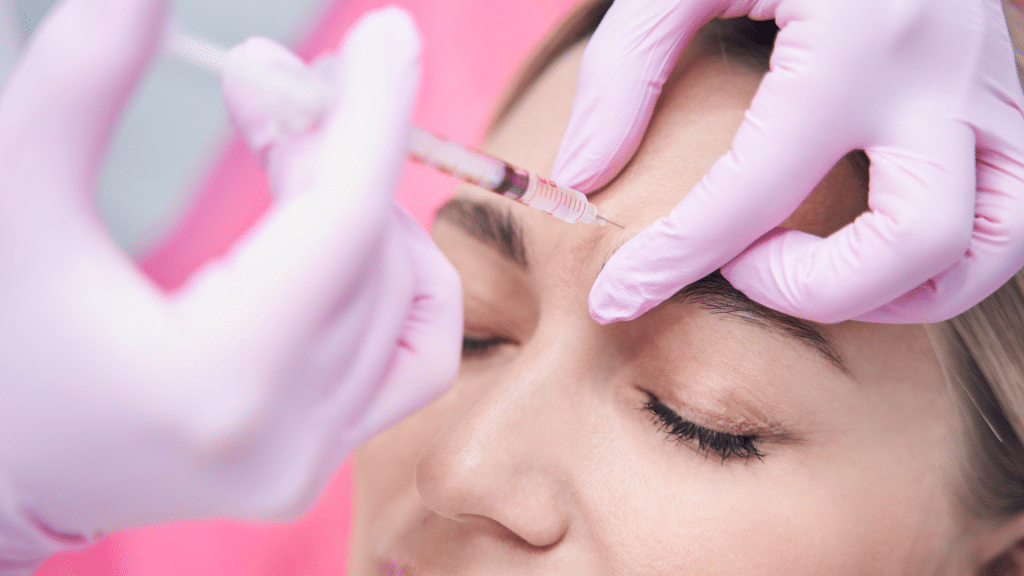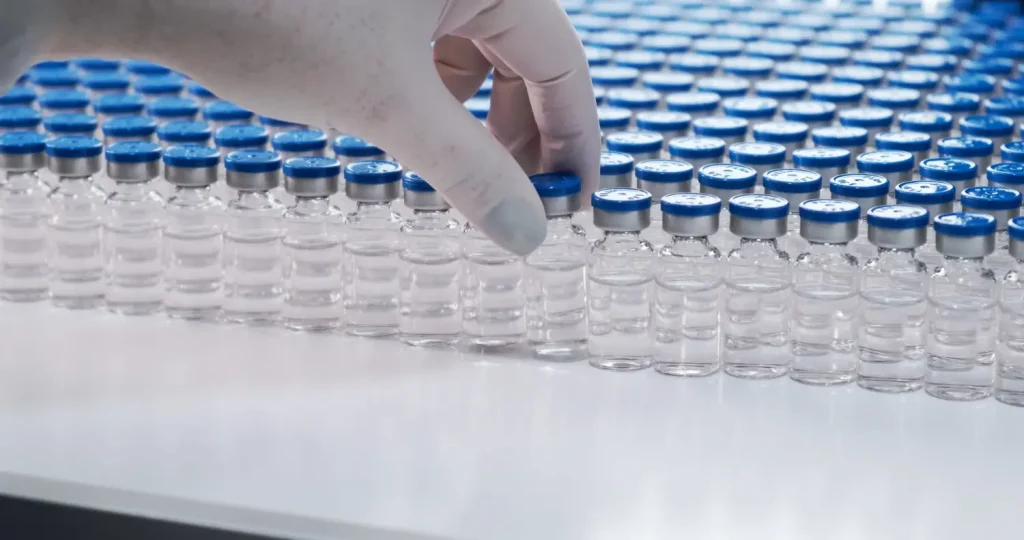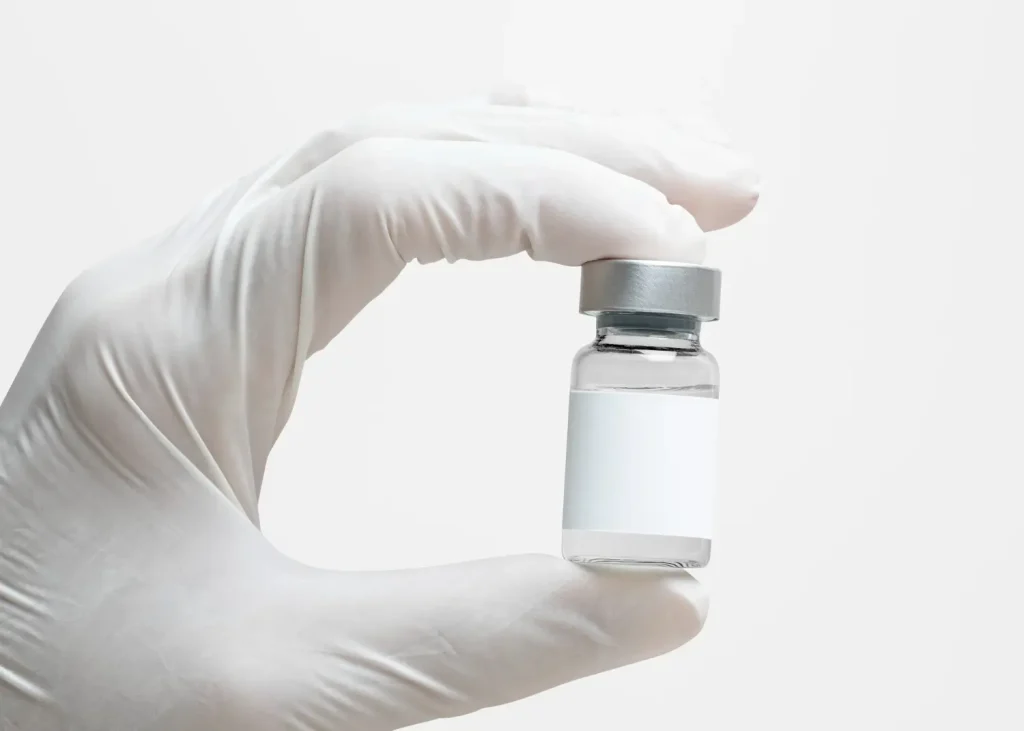In 2024, the dermal filler market continues to thrive, with a notable shift towards natural beauty and away from the “overfilled” look of previous years. Patients now seek treatments that offer subtle enhancements, aligning with the broader trend of embracing one’s unique features.
Amidst this landscape, two prominent fillers, Radiesse and Restylane, stand out. Radiesse, known for its calcium hydroxyapatite composition, offers long-lasting results and is favored for deeper wrinkles and facial contouring. Restylane, primarily composed of hyaluronic acid, excels at plumping lips and filling fine lines, catering to those seeking immediate improvement.
This article will compare Radiesse and Restylane, discussing their similarities and differences, effectiveness, and suitability for different aesthetic goals.
Key Takeaways
- Radiesse and Restylane are two popular dermal fillers used in medical aesthetics.
- Radiesse is composed of calcium hydroxylapatite, while Restylane is made of hyaluronic acid.
- Radiesse is commonly used for jawline contouring, hand rejuvenation, and non-surgical butt lifts, while Restylane is often used for lip augmentation, cheek enhancement, and wrinkle reduction.
- Radiesse’s longevity is typically 12-18 months, while Restylane lasts 6-18 months.
- Both fillers have advantages and disadvantages, and the choice between the two depends on specific patient needs and treatment goals.
About: Medical Spa RX provides premium products at the best prices for medical practices. If you want to buy Radiesse for your practice, the sales representatives at Medical Spa RX can guide you.
Understanding Radiesse and Restylane Formulations

Radiesse is a unique injectable filler. Radiesse’s main ingredient, calcium hydroxylapatite (CaHA), forms microspheres in the gel. This mix makes Radiesse more than just a filler; it creates a scaffold under the skin by stimulating collagen production, a vital protein for the skin’s firmness and elasticity.
Meanwhile, Restylane stands out in its hyaluronic acid composition. This key ingredient is crucial for drawing moisture into the treated area and supporting collagen production. Restylane excels as a dermal filler by filling wrinkles and lines, enhancing facial contours, and improving skin hydration.
Uses and Applications of Radiesse and Restylane

Doctors use Radiesse for facial rejuvenation and to add volume where it’s lost. It smooths out wrinkles, fills in sunken facial areas, and returns a youthful look.
On the other hand, Restylane also plays a crucial role in medical aesthetics. Doctors often use this hyaluronic acid-based filler to bring back volume and smoothness to the face.
Longevity and Durability of Radiesse and Restylane

Radiesse shows results that can impress for about 15 months. Some folks might need a quick touch-up around month 7 to keep things looking smooth. Its ability to stick around ranges from 12 to 18 months, making it a strong choice for lasting beauty boosts.
Restylane shows impressive results that last up to 12 months. Due to its thick consistency can even last 18 months in some areas, like under the eyes. This longevity is due to Restylane’s use of hyaluronic acid, a substance known for lasting effects in facial rejuvenation treatments.
How long Radiesse and Restylane last can depend on many things. One significant factor is the physical and chemical makeup of the fillers. Radiesse has calcium hydroxylapatite, which stays longer in the body than Restylane’s hyaluronic acid.
Pros and Cons of Radiesse and Restylane
Radiesse shines in medical aesthetics because of its diverse applications. It’s excellent at smoothing fine lines on the lower face or caring for loose skin. This means it helps make people look younger and fresher without needing surgery.
However, patients sometimes report problems after using Radiesse, so they check reviews when using this filler in various applications, such as pictures from patients who received Radiesse before and after in the jowls. These issues include bruising, redness, and swelling. Some even feel pain or itchiness; a few notice small lumps under their skin.
On the other hand, Restylane excels in treating fine lines and delicate areas. Its softer composition makes it a go-to for smoothing out tiny wrinkles, especially around the eyes and lips. Medical professionals often pick Restylane over others due to its dense nature, effectively tackling severe aging signs like deep folds and creases.
While famous for its effective results in cosmetic enhancements, Restylane has a few downsides. Patients may also experience minor side effects like bruising, redness, swelling, tenderness, and itchiness post-treatment.
Selecting the Most Appropriate Filler for Specific Patient Needs
Choosing between Radiesse and Restylane requires understanding their differences and how they meet patient needs. Each filler has its strengths in treating aging signs and enhancing volume.
- Assess the area needing treatment. Radiesse works best for larger areas needing volume, while Restylane is ideal for fine lines and delicate spots.
- Consider the longevity desired. Radiesse lasts longer, making it a better choice for patients seeking durability.
- Think about the patient’s age and skin condition. Restylane can tackle severe aging signs like deep folds and is suitable for mature skin.
- Evaluate your comfort level with shaping and correcting fillers since Radiesse is more challenging to adjust after injection.
- Account for the patient’s budget, as Radiesse might cost more upfront but offers a longer lifespan, possibly resulting in savings over time.
- Reflect on your expertise with injectables; experienced professionals might prefer the challenge of Radiesse, while those new to fillers might start with Restylane.
- Look into your patient’s specific needs. Restylane’s varied product line allows targeted treatments, from lifting cheeks to smoothing lips.
- Factor in recovery times and potential side effects; patients may favor one filler over another based on their schedules or sensitivity levels.
- Review before-and-after cases similar to your patient’s situation to predict outcomes more accurately with either filler type.
- Finally, listen closely to your patient’s goals and concerns; their preferences are crucial in selecting the suitable filler.
Conclusion
In comparing Radiesse and Restylane, both dermal fillers offer distinct advantages for aesthetic treatments. Radiesse, with its calcium hydroxylapatite composition, provides long-lasting results and stimulates collagen production, making it ideal for volumizing and contouring. Restylane, formulated with hyaluronic acid, delivers immediate results and is versatile in treating wrinkles, folds, and volume loss.
Radiesse and Restylane ultimately hinge on the patient’s needs and the healthcare provider’s expertise. Understanding each filler’s properties and uses allows informed decisions to achieve the best outcomes.
1. What’s the main difference between Radiesse and Restylane?
Radiesse is more for deep wrinkles, while Restylane is great for fine lines and lips.
2. How long do Radiesse results last compared to Restylane?
Radiesse can last up to a year or more; Restylane usually lasts about 6-9 months.
3. Can I use Radiesse and Restylane together in my treatment plan?
Yes, you can use both, depending on what areas of your face you want to improve.
4. Are there any side effects with Radiesse or Restylane?
Both might cause some swelling or bruising right after the treatment, but it disappears quickly.
5. Which is better for first-timers wanting a facial filler: Radiesse or Restylane?
Restylane is often recommended for first-timers because it’s less intense and has a shorter recovery time.
References
Wellesley Cosmetic Surgery. (n.d.). Radiesse vs Restylane: Comparing the two fillers. Retrieved from https://www.wellesleycosmeticsurgery.com/radiesse-vs-restylane-comparing-the-two-fillers/
Aguilera, S. B., McCarthy, A., Khalifian, S., Lorenc, Z. P., Goldie, K., & Chernoff, W. G. (2023). The Role of Calcium Hydroxylapatite (Radiesse) as a Regenerative Aesthetic Treatment: A Narrative Review. Aesthetic surgery journal, 43(10), 1063–1090. https://doi.org/10.1093/asj/sjad173
Elmer, M. (2024, January 12). Dermal filler trends for 2024. FillerCloud. https://fillercloud.com/dermal-filler-trends-for-2024/





















